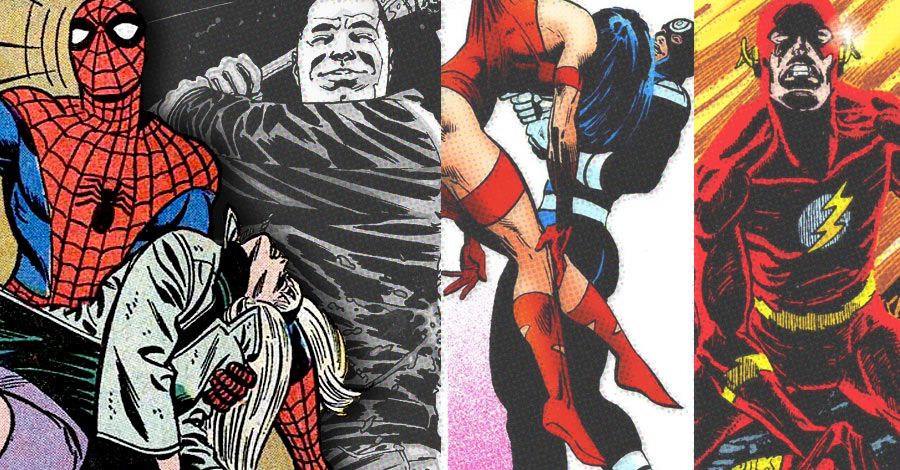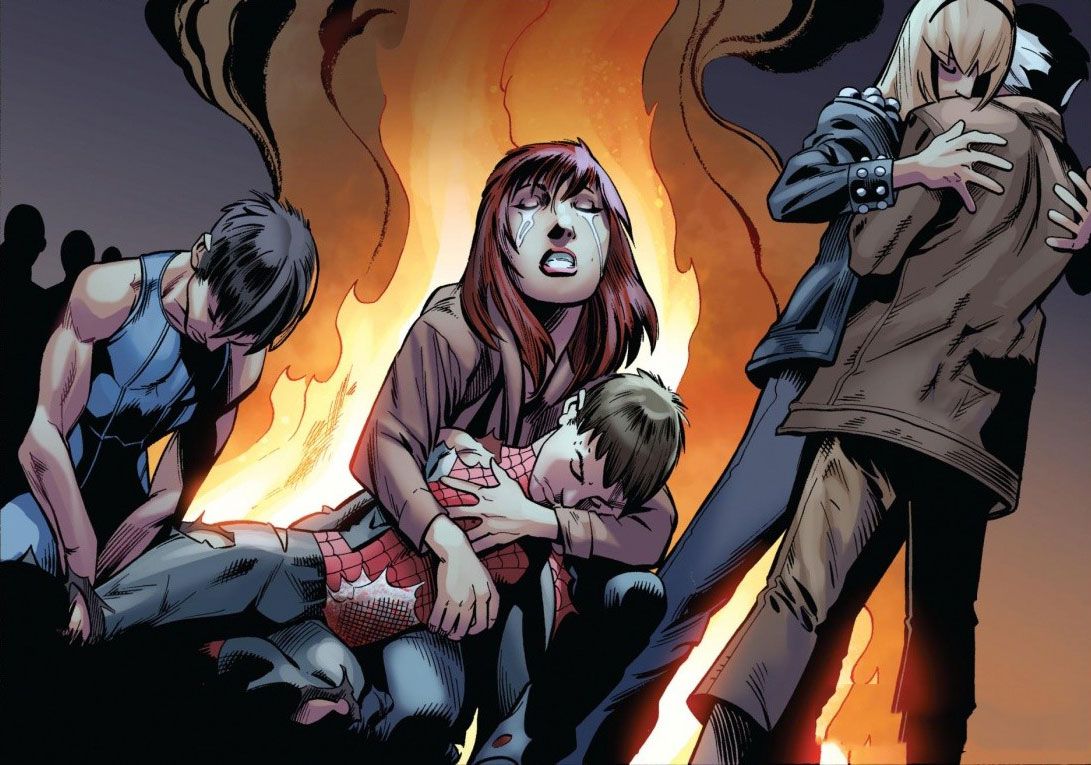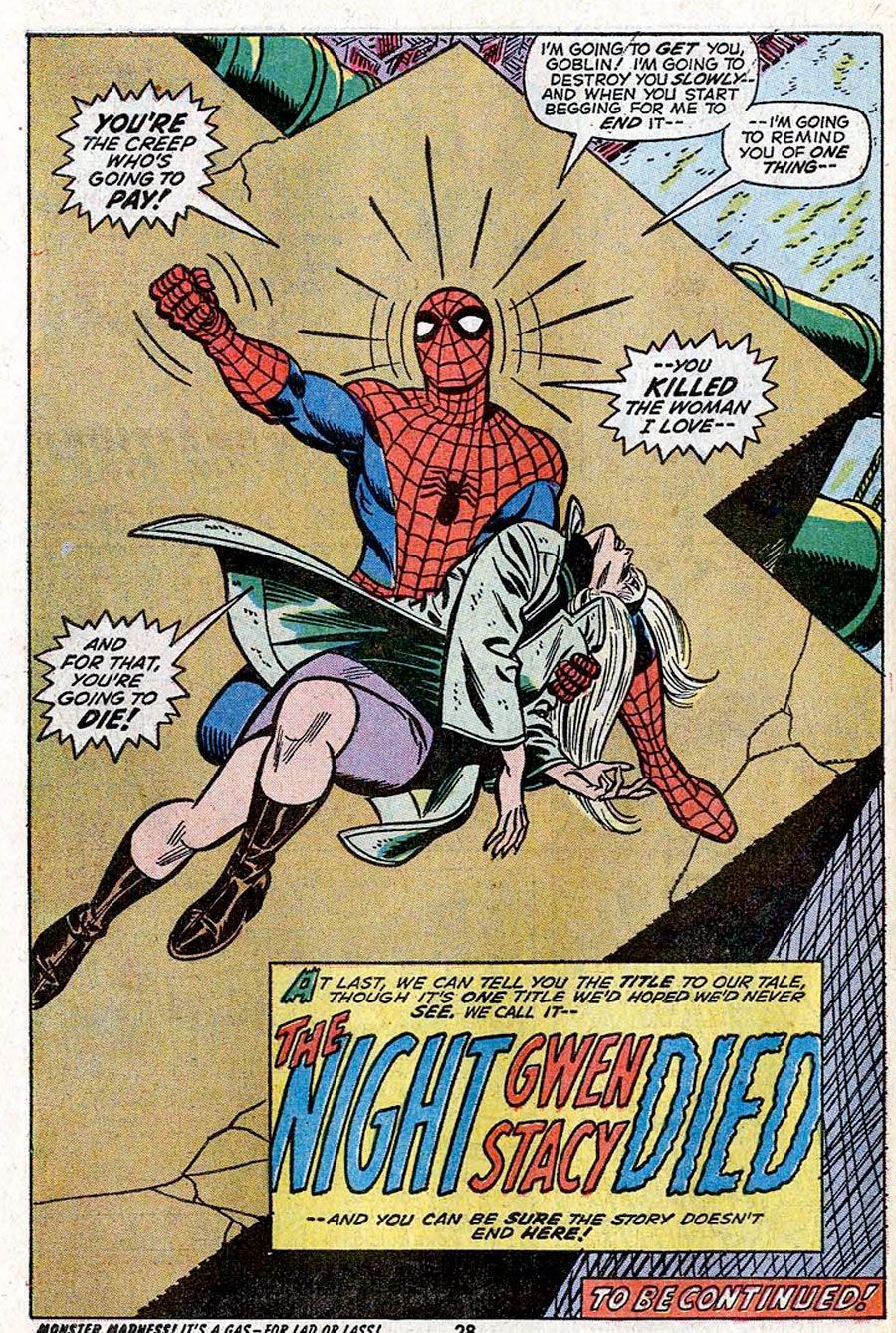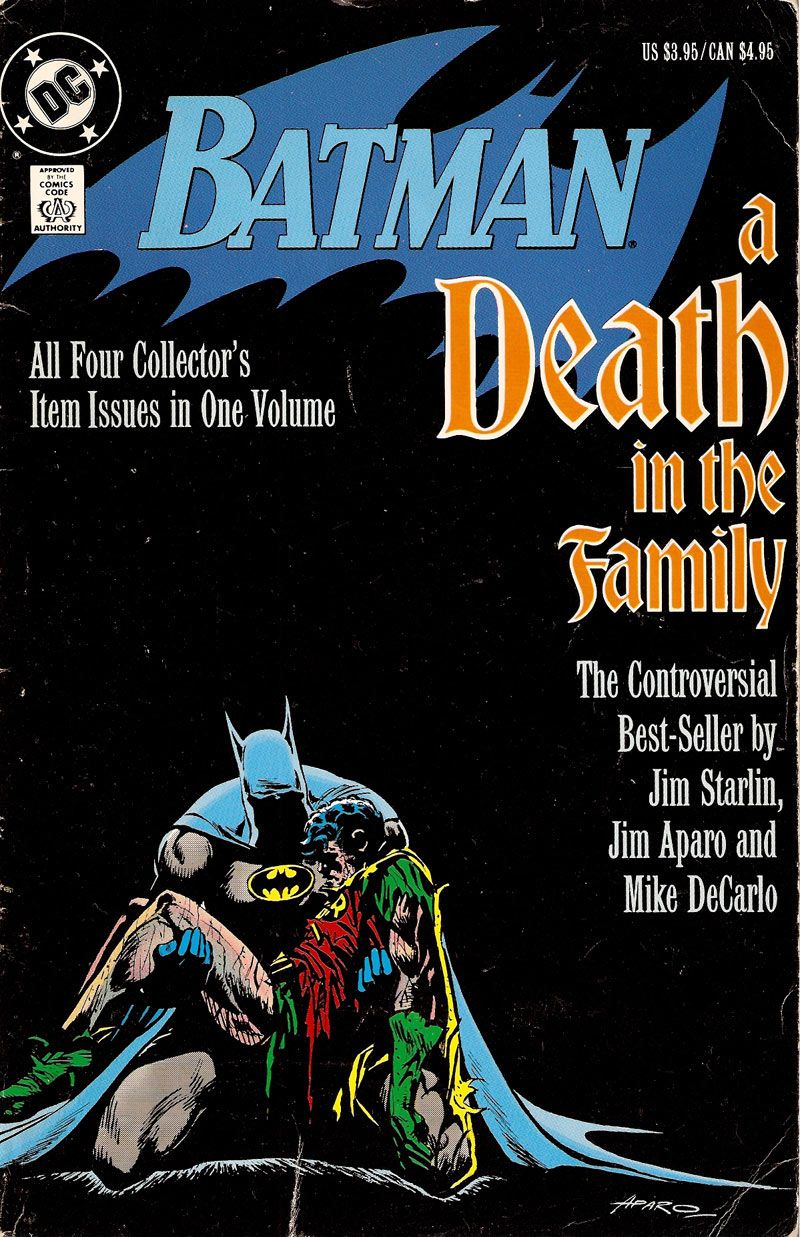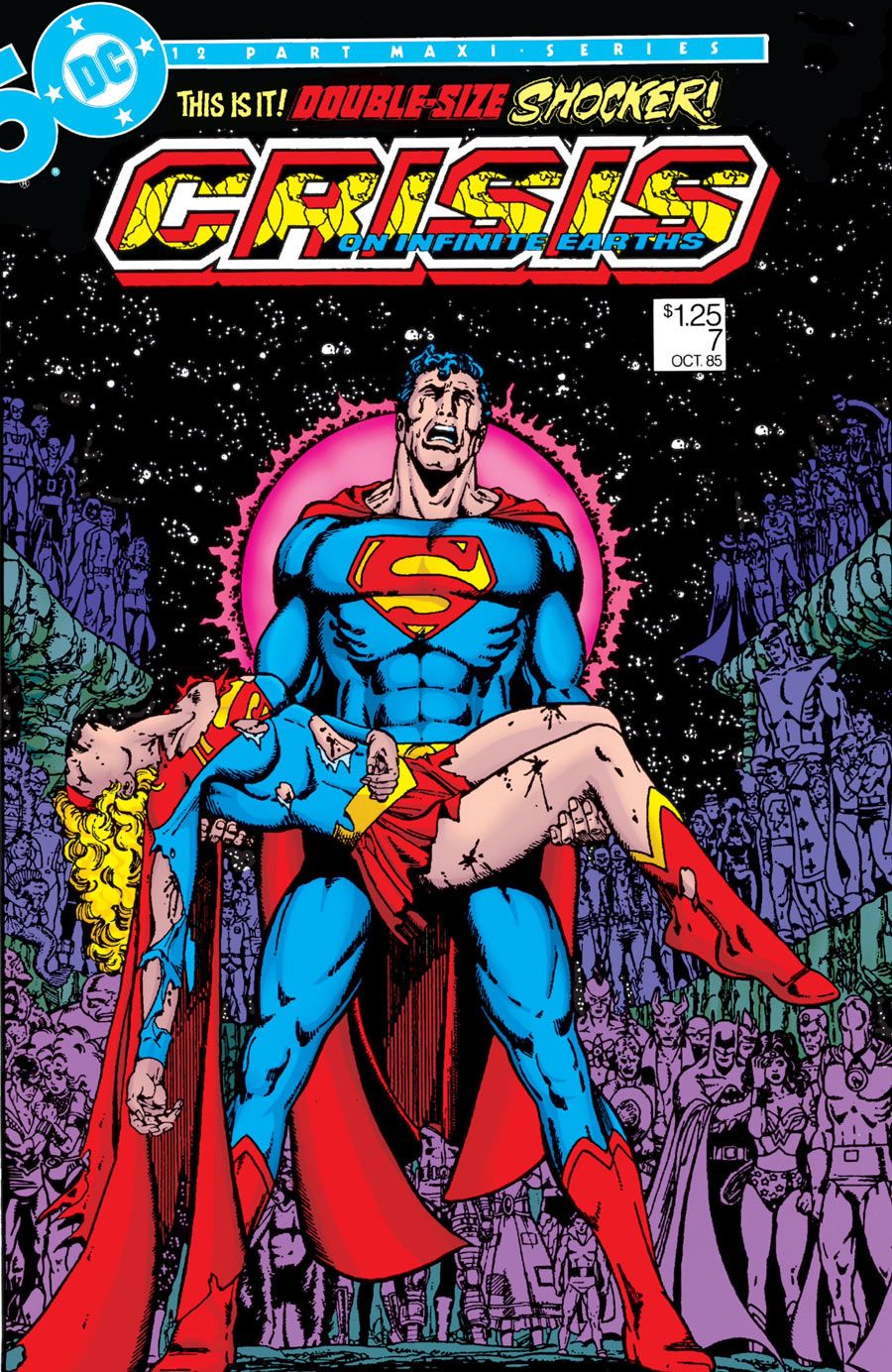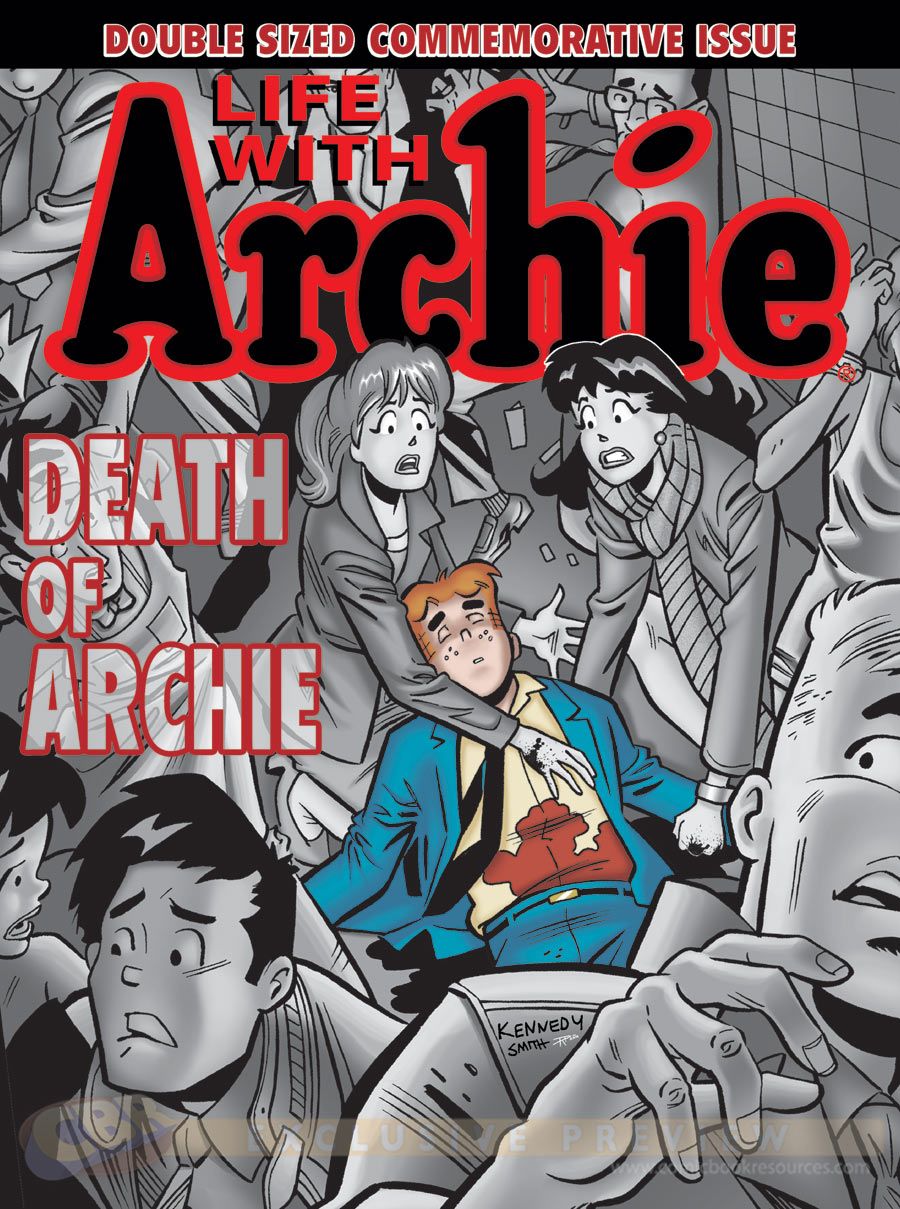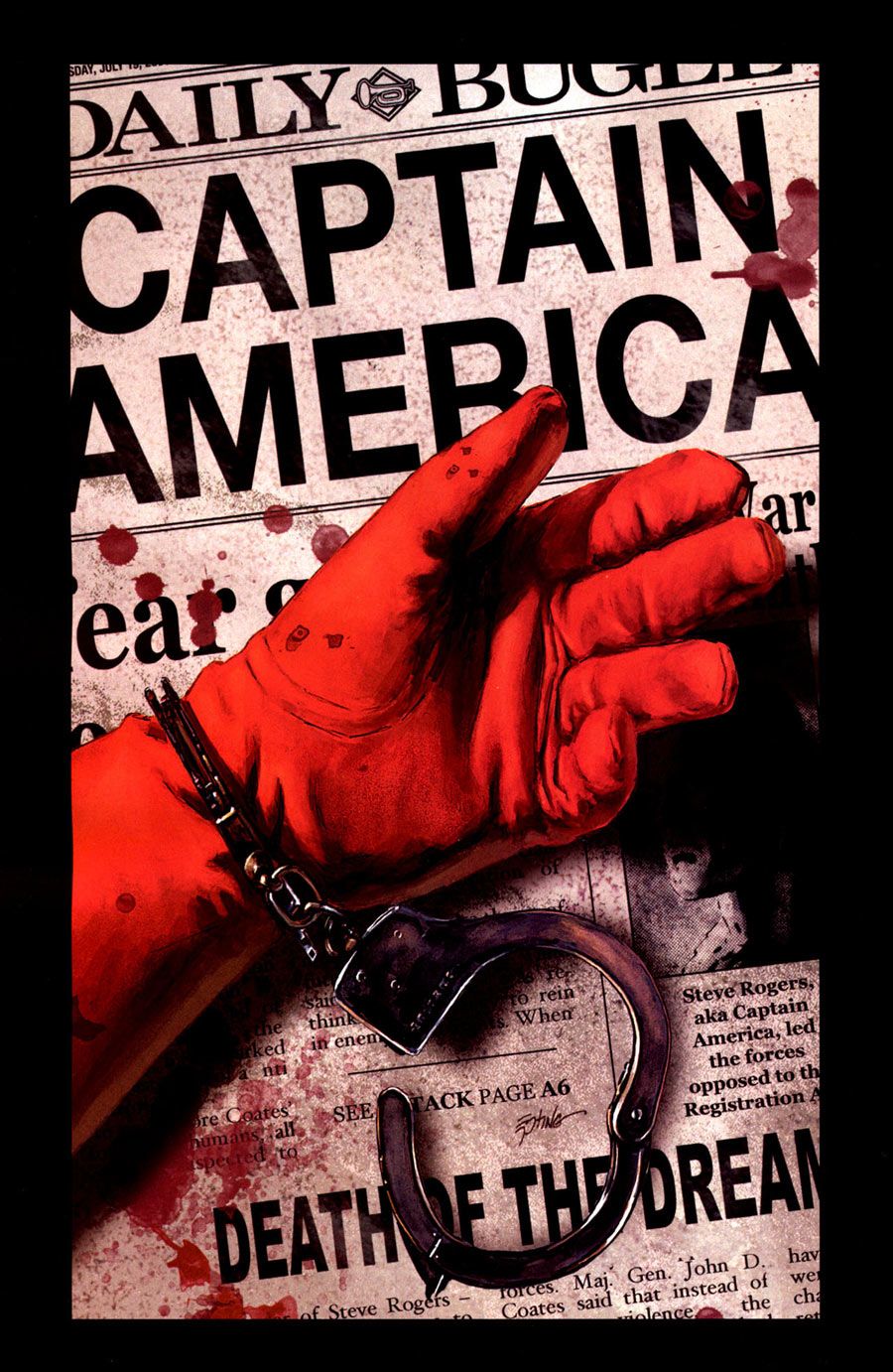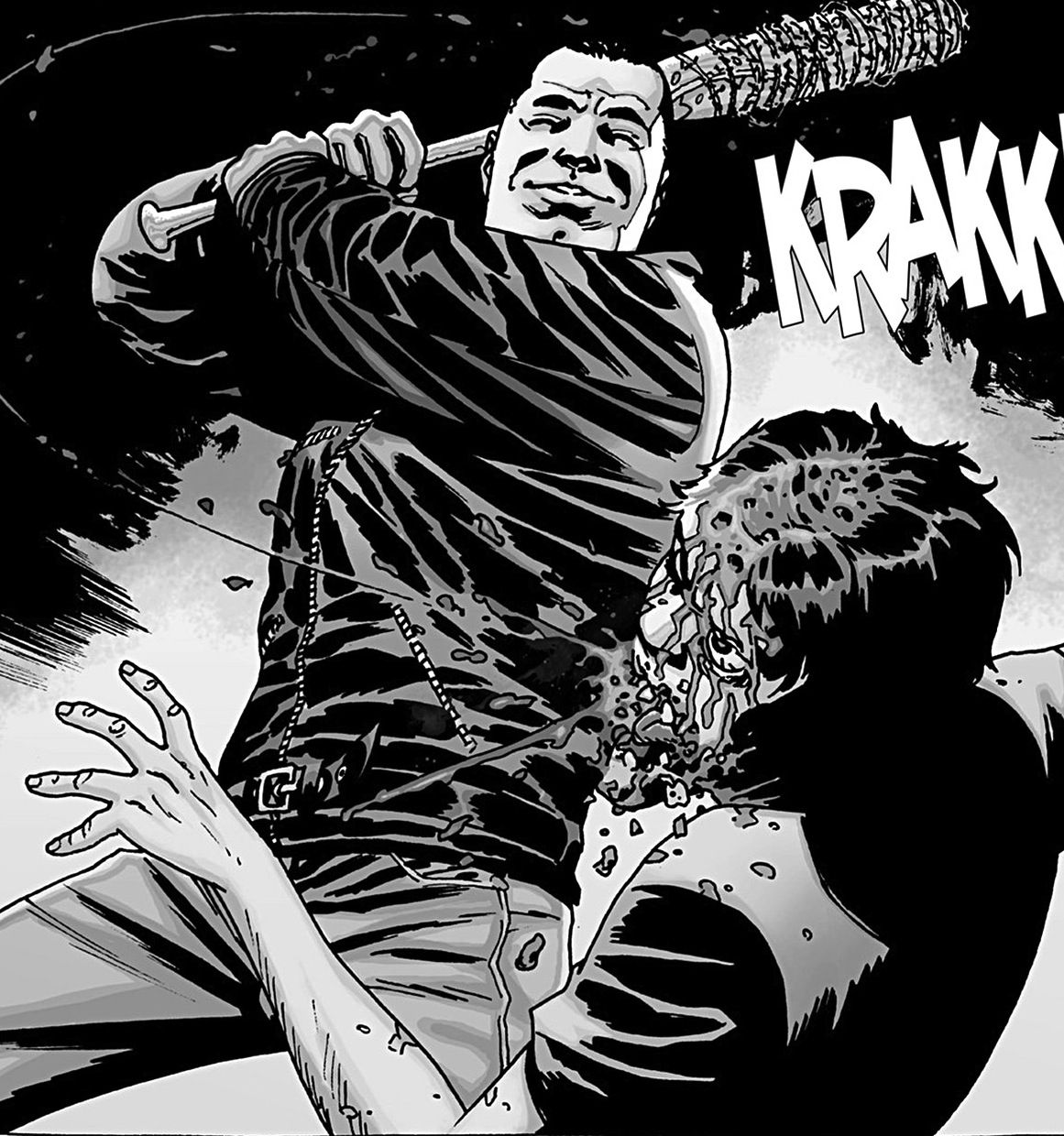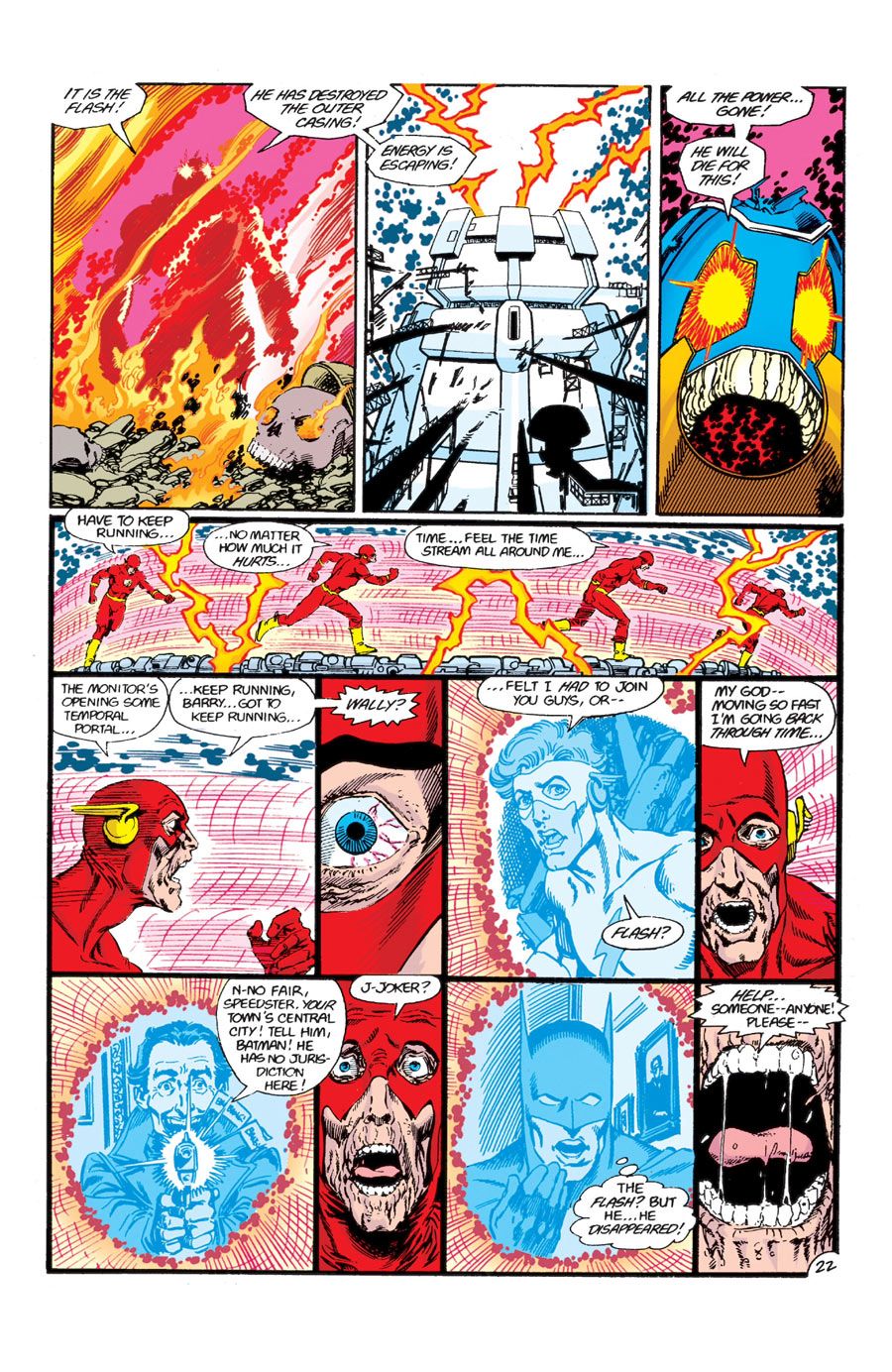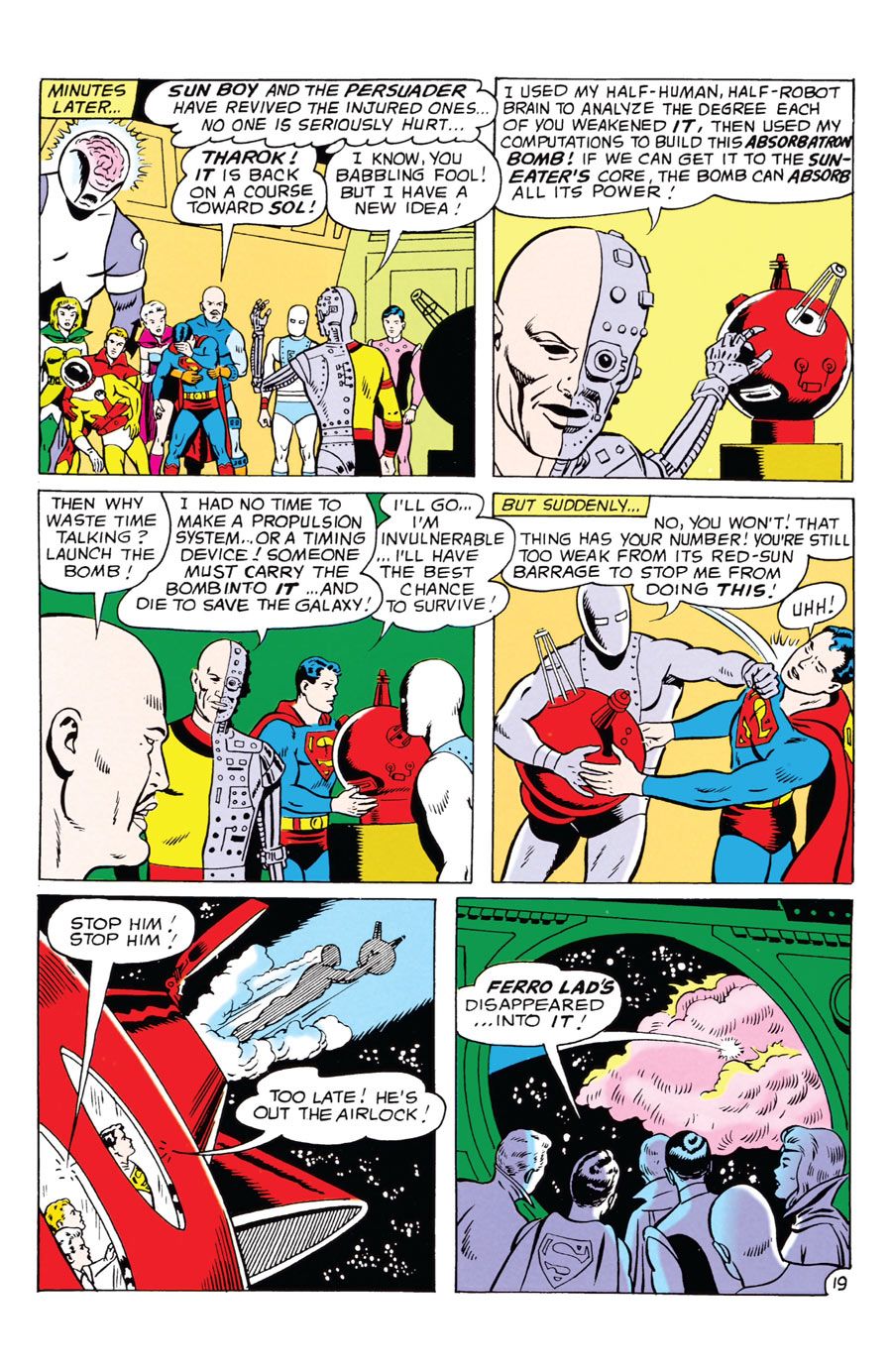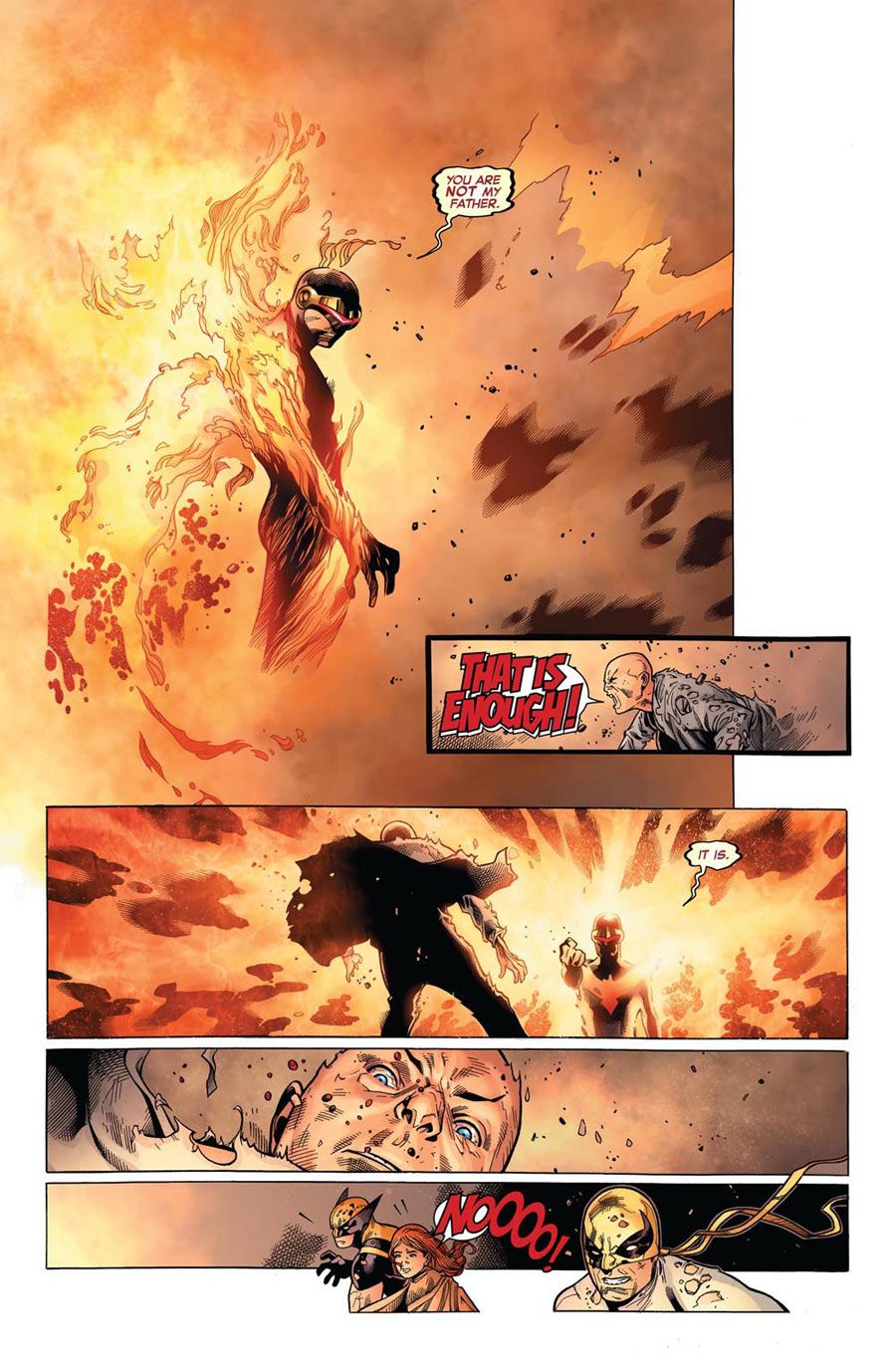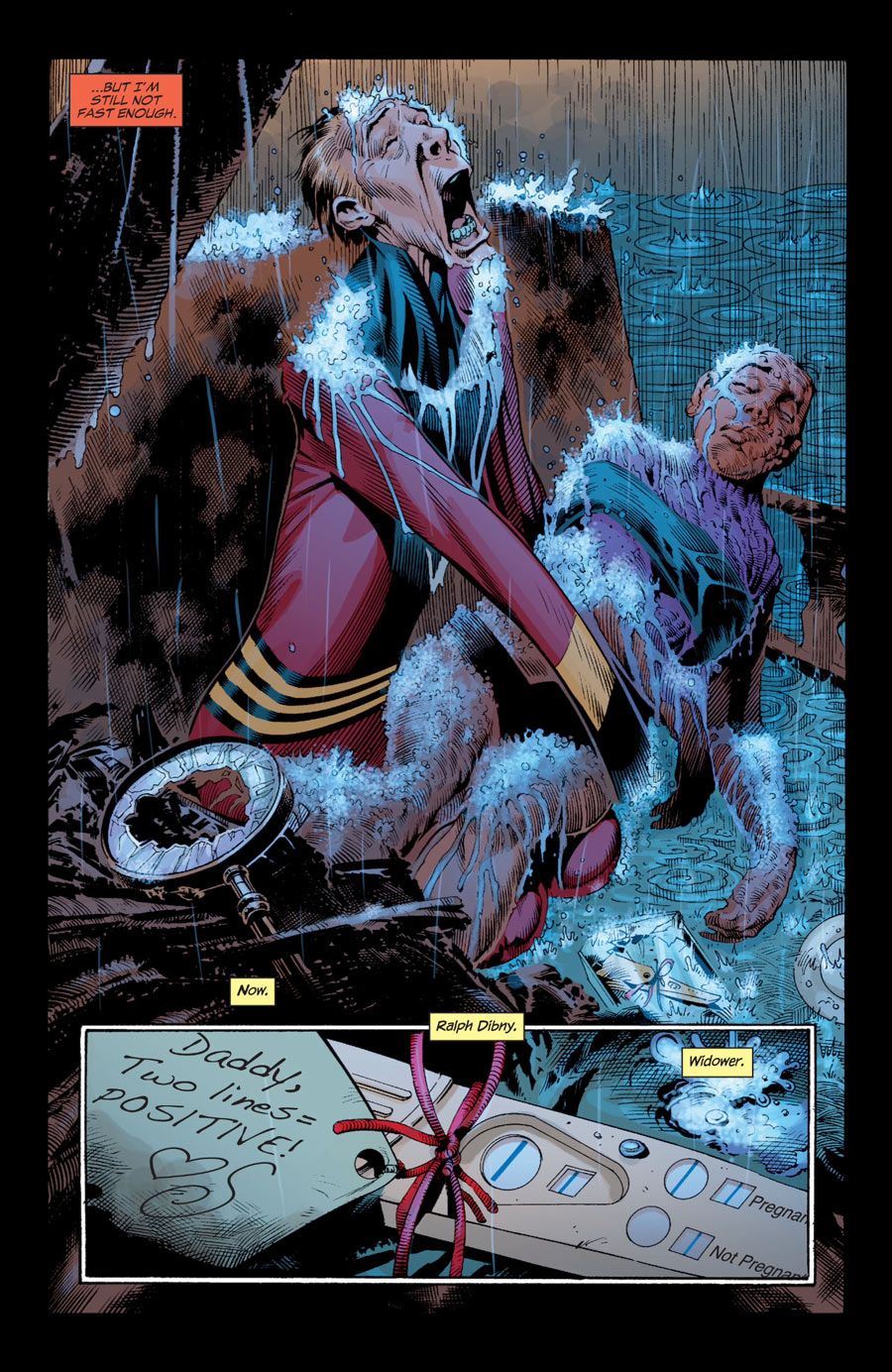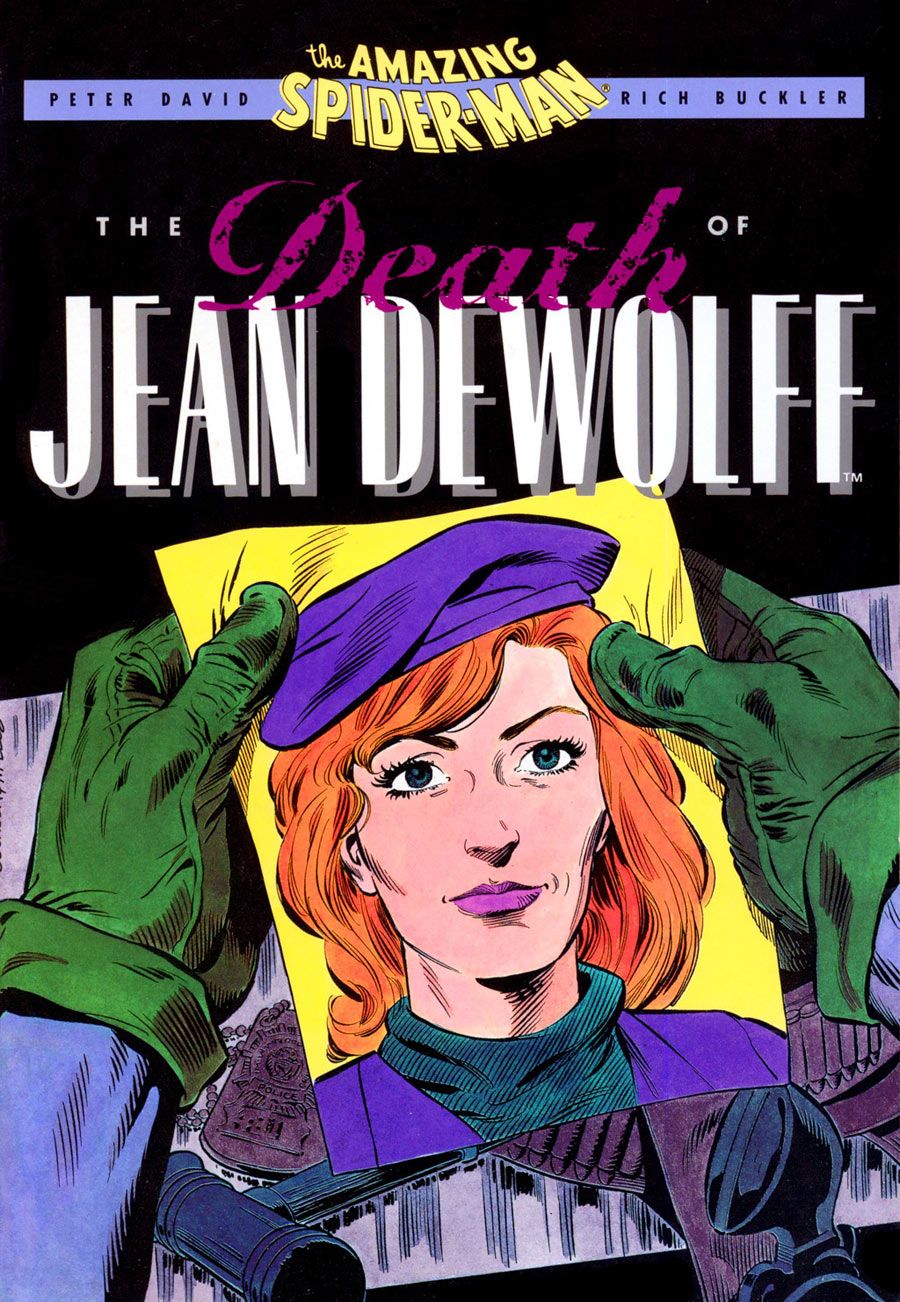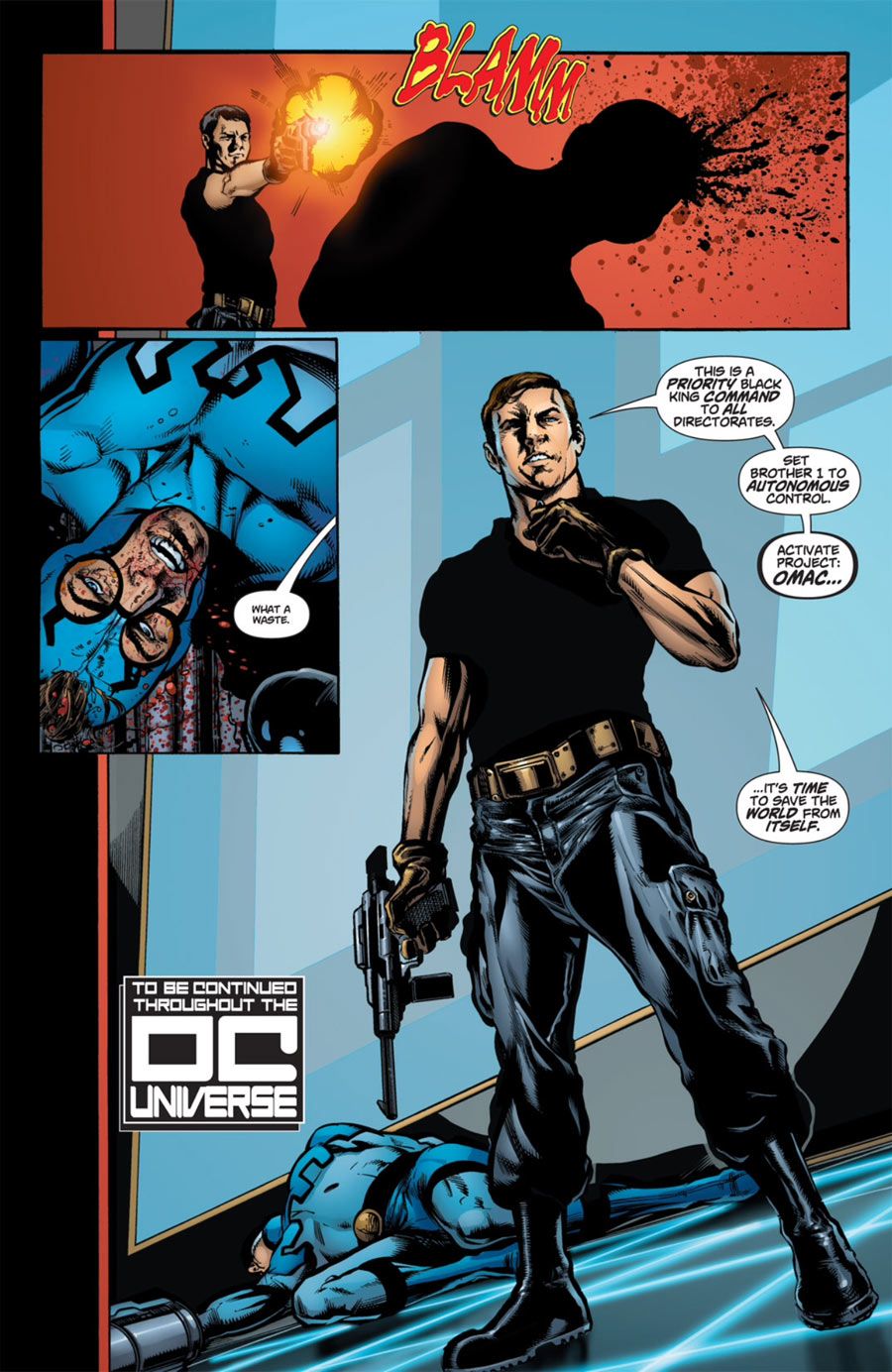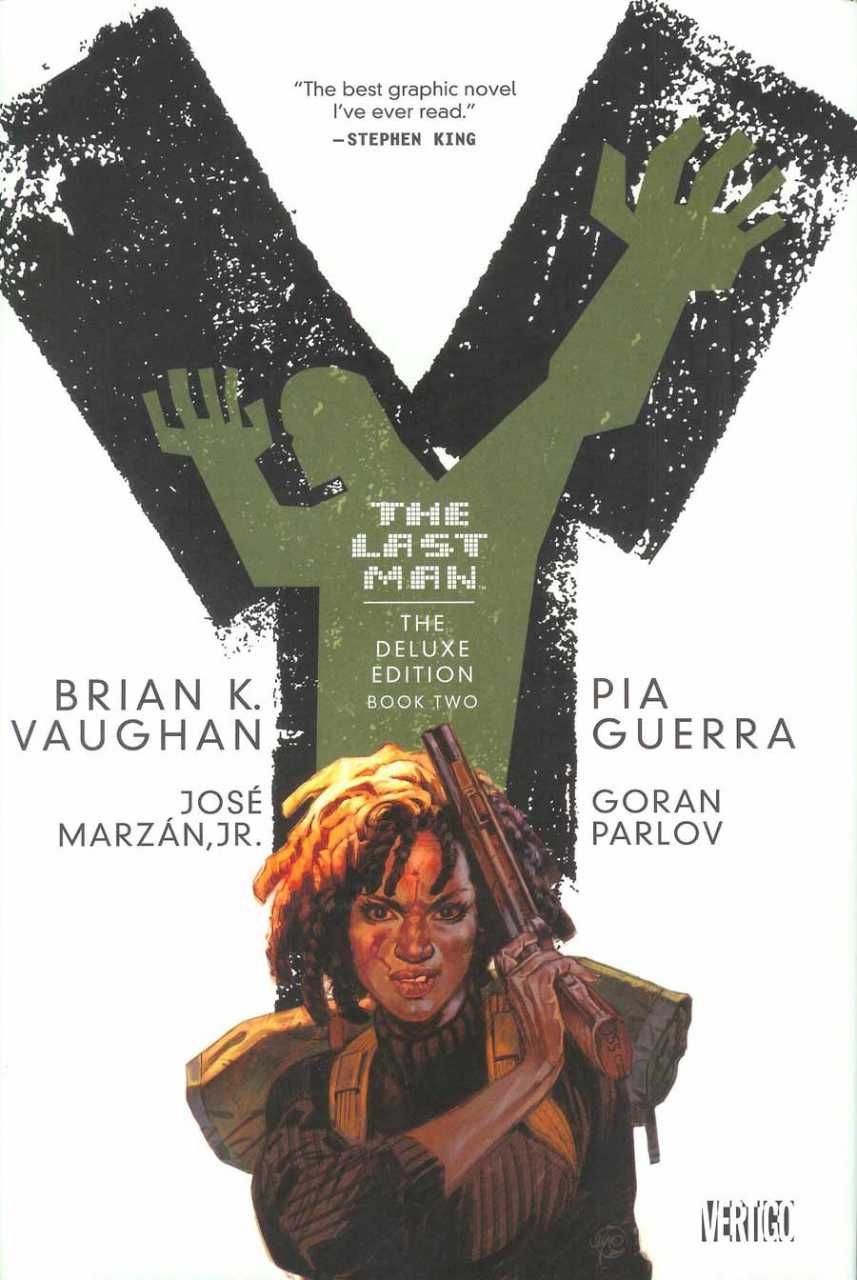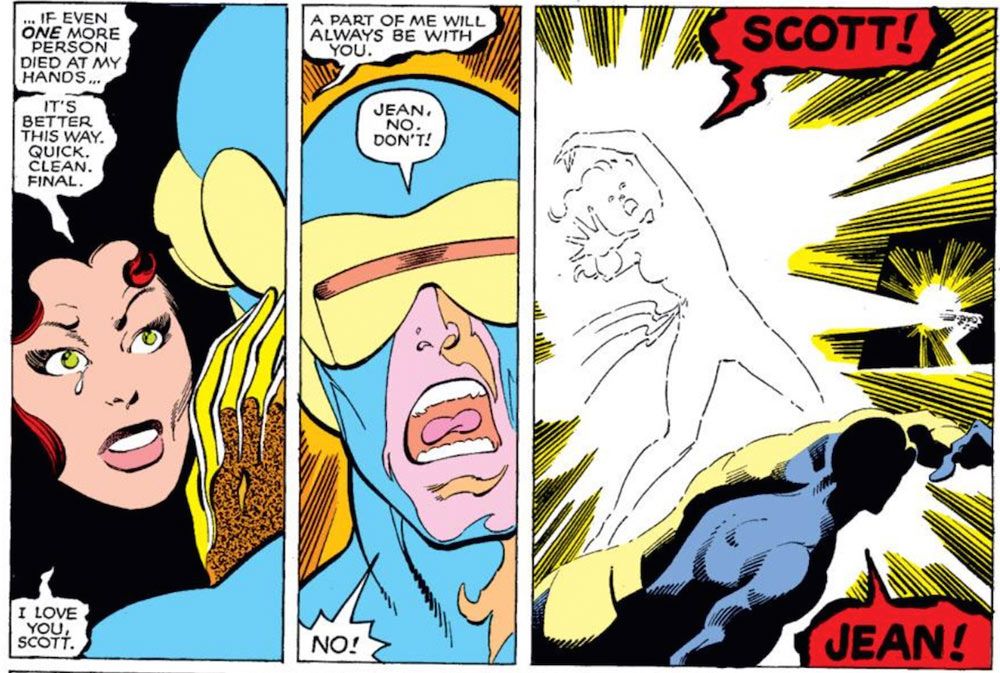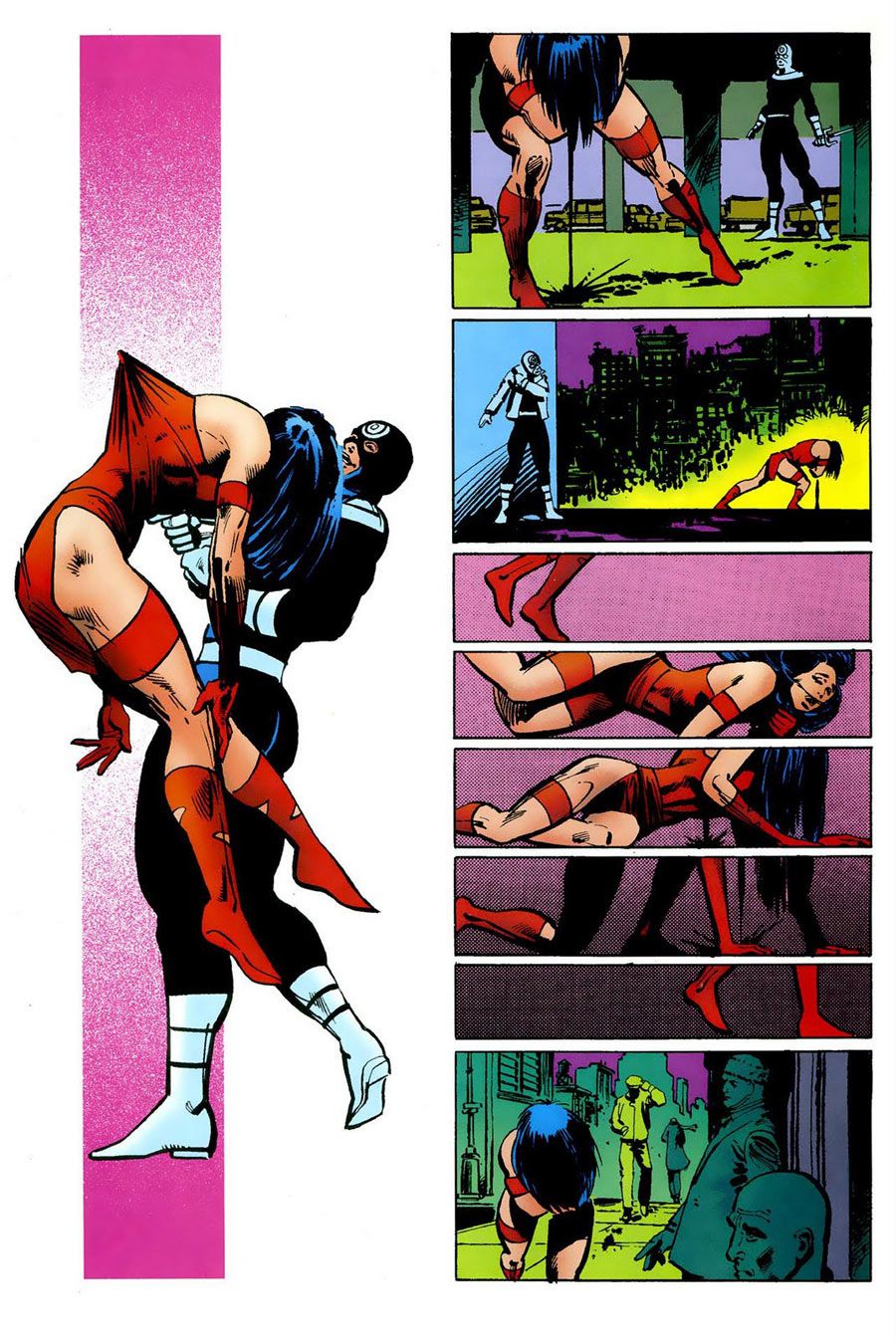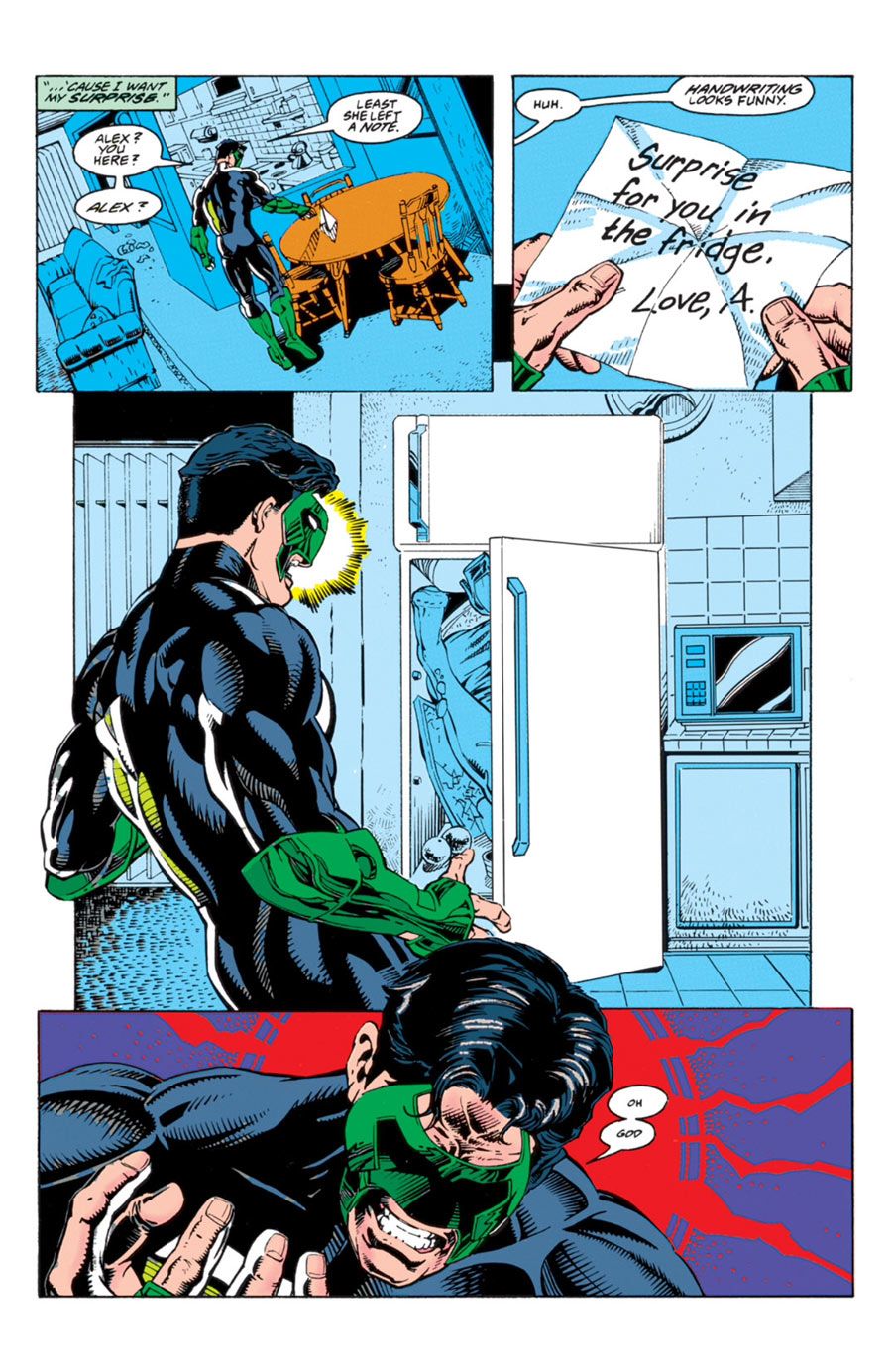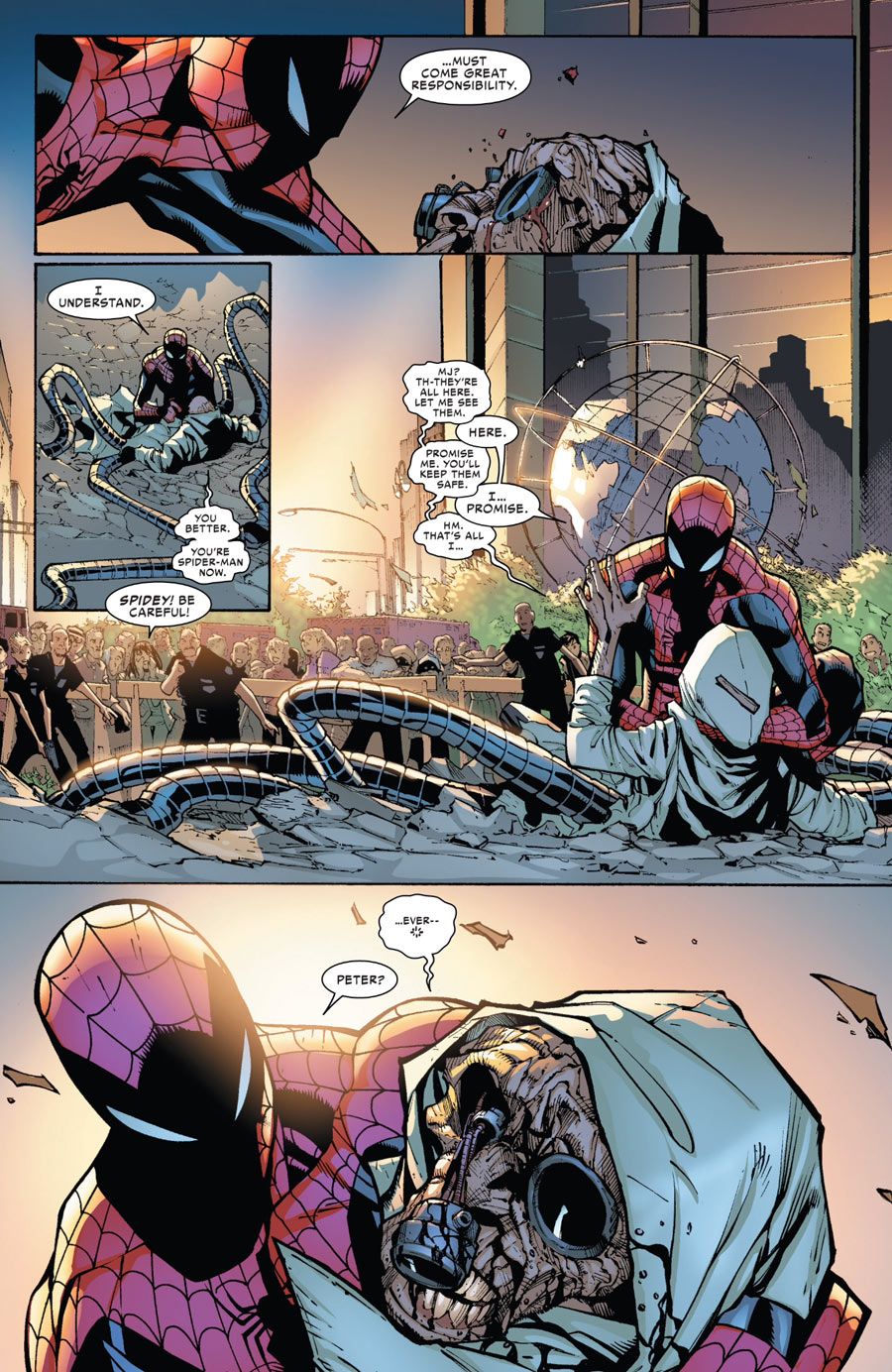Character deaths are a staple of just about all forms of fiction -- whether it's to add emotional resonance, ponder the fleeting nature of life or just to shake things up a bit. Death in mainstream superhero comic books is its own unique thing -- as you're likely aware, most deaths don't last. Sooner or later, the character returns bigger, better and badder than ever before. Yet in the hands of a talented and innovative creator, even a temporary death can be a poignant one -- not to mention a move capable of getting widespread attention.
And in comic book series that don't take place in a shared, constantly published universe, death can be just as -- and sometimes more -- impactful. It's one thing to see a favorite superhero die knowing that he or she will be back sooner rather than later, but in a finite series, death is forever and at times, both emotional and memorable.
Scores of major superhero have died at one time or another only to return, but temporary or not, many of those deaths had a lasting impact on that character's world. Death can also mean big bucks for publishers and retailers as, even though fans claim to be growing weary of the death card, death issues usually spike sales in a big way.
RELATED: The Most Shocking and Memorable Deaths in Comics 2: Reader Suggestions
Wolverine is currently nearing his demise in the pages of "Death of Wolverine," wrapping on Oct. 15 with issue #4, but this event is only the latest in a long cycle of death and rebirth. Superman's death in the 1990s was one of the biggest ever, but readers knew the Man of Steel wouldn't be down forever. Let's walk among the comic book character tombstones and take a look at some of the most memorable and shocking fictional deaths that fans have witnessed. These are the ones we won't forget, and the ones that have had a lasting impact on those characters and their worlds.
Warning: There will be spoilers for "The Walking Dead" and "Y, the Last Man" in this article. So if you are a fan of either comic but aren't caught up or a fan of AMC's hit zombie series, be warned.
Ultimate Peter Parker
"Ultimate Spider-Man" #160 (2011) by Brian Michael Bendis and Mark Bagley
Other than in the occasional issue of "What If...?", Marvel fans never expected to actually experience the death of Peter Parker. But in 2011, the publisher used its Ultimate Universe to explore the impact the demise of its most iconic character would have on the world. And while the original Peter remained among the living, Ultimate Peter Parker's death had all the emotional resonance one might expect.
For 160 issues, Brian Michael Bendis related the adventures of the Ultimate Spider-Man, a character that was the very epitome of selflessness and heroism. This Spidey was one of the most likable heroes in comics, a symbol for everything a modern hero should be. So when Peter was killed by the Green Goblin, sacrificing everything to save his Aunt May and Mary Jane Watson, it hurt. As he lay in Mary Jane's arms and whispered, "I did it Uncle Ben," readers were reminded of what's so special about the concept of Spider-Man.
The most impressive thing about this memorable death was that the demise of Peter was just the beginning. Bendis used the event to examine Aunt May, Mary Jane, Gwen Stacy and J. Jonah Jameson, crafting powerful moments for each iconic character. Plus, at the moment of his death, Peter became the Uncle Ben figure to a new hero that had been gifted with spider powers, a young man named Miles Morales who served as an extension of Peter's lesson of responsibility for a new era.
Gwen Stacy
"The Amazing Spider-Man #121" (1973) by Gerry Conway and Gil Kane
Many a Spider-Man story was fueled by Peter's love for Gwen Stacy, as the wall-crawling hero struggled between his sense of responsibility as a hero and his desire to reveal the truth about his double life to her. And when her father, Captain Stacy, dies as a result of Spider-Man battling Doctor Octopus, Gwen's subsequent hatred of Peter's alter ego forever denies him the ability to be truthful with her.
In 1973, main characters simply didn't die. There was the illusion of change, and secondary supporting characters could perish, but no one, particularly a character as popular with readers as Gwen Stacy, was in any real danger. That all changed when the Green Goblin kidnapped Gwen and flew her to the top of the Brooklyn Bridge (as shown in the art, or the George Washington Bridge as given in the text). Fans had seen the girl in peril trope countless times before, the superhero swooping in at the last second so save her, so when Peter caught the falling Gwen with a web-line all seemed right and familiar -- except for the "snap" sound effect. As Spider-Man reeled his girlfriend in, he realized her neck had been broken, a moment that signified the end of innocence in mainstream comics and the thematic end of the Silver Age.
The death fundamentally changed Peter as well, providing another character-defining tragedy for a hero who has already lost his mentor figure. Gwen's death led to the death of Norman Osborn, the rise of Harry Osborn as the Green Goblin and a darkening of Peter's world. The death of Gwen Stacy changed Peter, but it also changed the underlying feeling of the superhero comic tale. Now, no one was safe.
Jason Todd
"Batman" #427-428 (1988) by Jim Starlin and Jim Aparo
The death of Jason Todd will always be remembered as the event that further darkened the Dark Knight. It was also the first character death in the history of the medium that fans were directly responsible for. It may have been the Joker who wielded the crowbar and set the bomb that took Jason's life, but it was the fans and a 1-900 number that decided the second Robin's fate.
Fans had grown disenchanted with Jason Todd's tenure as Robin, as the character had grown increasingly flippant, violent and abrasive, especially when compared to Dick Grayson. In the story, Todd, who had been stripped of the mantle of Robin by Batman, had the misfortune to collide with the Joker, who proceeded to beat the young sidekick within an inch of his life before setting off a bomb in Todd's vicinity. Between issues, the fans voted on whether Todd lived or died in the explosion, to the tune of 50¢ per phone call, and the public decided 5,343 to 5,271 that Todd had to go.
The death was shocking, and the demise of Robin led to an era where Batman grew darker as a result of failing his ward. A memorial display case, very familiar to readers of Frank Miller's "Dark Knight Returns," became a familiar sight in the Batcave, further connecting the regular DC Universe to Miller's potential future timeline. The tragedy of Jason Todd led to the rise of Tim Drake as the third Robin, a character who would become one of DC's most beloved characters over the next several decades. Of course, Todd would eventually return as the Red Hood, a role fans actually embraced for the character and he continues to play a central role in the New 52. Jason Todd's legacy was sealed by a crowbar and a bunch of phone calls, but it also drove the direction of Batman and his world for years to come.
Supergirl
"Crisis on Infinite Earths" #7 (1985) by Marv Wolfman and George Perez
In 1983, DC Comics promised fans that "Crisis on Infinite Earths" would change everything, and as readers quickly learned, they had to prepare themselves to say goodbye to even the most beloved of characters.
Much like Gwen Stacy, Supergirl was a symbol of an age of innocence, a character that reminded fans of a simpler age. In the middle of the Crisis, Kara Zor-El, a character fans had watched grow up, thrilling to her adventures in the modern world and in the 30th Century with the Legion of Super-Heroes, sacrificed herself to save the universe. As she smashed into the Anti-Monitor's ultimate weapon, again and again, fans watched the brave hero slowly and torturously die. When Superman arrived and found the broken body of his only living blood relative, the look on his face said it all. And that cover, that classic, much-homaged George Perez cover that showed the whole of the DC Universe mourning the death of one of their own, was immediately iconic. More deaths were to come in the Crisis, but it was the death of their smiling, heroic, courageous young hero that made it clear: After the Crisis, nothing would ever be the same.
Archie Andrews
"Life with Archie" #36 by Paul Kupperberg, Pat Kennedy and Tim Kennedy
By the time "Life with Archie" #36 was published this past July, the actual event of Archie Andrews' death wasn't exactly shocking. It had been revealed months ago by the publisher that Archie would die saving a friend, later revealed to be Kevin Keller -- the company's first openly gay character, and in "Life with Archie" a politician and military veteran targeted for assassination. And the death was limited solely to the "Life with Archie" series, something of an alternate future depicting Archie's marriage to Betty in one timeline, and Veronica in another -- the character continues to live on in various other storylines, both typical teenage fun and the thoroughly atypical "Afterlife with Archie."
Yet just the simple fact that there was an Archie death story published is rather shocking, and representative of the unique evolution of the publisher. For decades, Archie has been known for safe, innocuous stories aimed at a very young audience, with little to no ongoing storylines. For Archie to die -- in dramatic, violent fashion -- was one of the most unexpected events in recent comic book history, and helped attract major mainstream media attention. The fact that it wasn't seen as cheap or silly or pandering was even more of an achievement. While it may not have been the permanent end of the character, it was likely as close to "the" death of Archie as readers could ever hope for.
Captain America
"Captain America" vol. 5, #25 (2007) by Ed Brubaker and Steve Epting
Another temporary but undeniably impactful death, the loss of Steve Rogers was a suitably seismic event that underlined the importance of Marvel's patriotic hero. The sight of the sentinel of liberty, bleeding out, brought low by a sniper's bullet, was a powerful reflection of modern day political divisions within the United States.
Rogers' death kicked off a long form story where the recently resurrected Bucky Barnes, AKA the Winter Soldier, took over the mantle of Captain America. With Rogers off the table, writer Ed Brubaker explored a world where the last active superhero of the Greatest Generation was murdered. A hero fell, but many others rose to take his place -- along with Bucky, Sharon Carter, the Falcon and Black Widow all reached new heights of heroism in Steve Rogers' name.
Readers eventually learned that Rogers wasn't dead after all -- he was displaced in time, forced to live out the darkest days of his life over and over. But while he was gone, Brubaker explored a new pantheon of patriotic heroes, and spotlighted why Captain America is so important to his country and to the world.
Glenn
"The Walking Dead" #100 (2012) by Robert Kirkman and Charlie Adlard
It's hard to deem any death in "The Walking Dead" shocking -- after all, the series is built on the foundation that the entire cast is in constant danger of coming to a horrifically violent end. But while anyone can go at any time in Robert Kirkman and Charlie Adlard's grey-washed world, for some reason, Glenn always felt like one of the few "safe" characters.
Guess again.
As the heart of the group of survivors fans followed for one hundred issues, Glenn was a very human and relatable character who had been through hell with Rick, Michonne, Carl and most importantly, his wife Maggie. When Glenn found out Maggie was pregnant, it was a rare moment of elation in their lives, a human victory that gave them a moment of bliss. Of course, we should have known it wouldn't last.
At the moment of Glenn's purest happiness, Negan made himself known. Fans of the television series have not yet met Negan, but the readers know he makes The Governor look like Winnie the Pooh. In a previous encounter with Glenn's group, Negan lost some of his troops. Negan told his prisoners he would choose one of them to die, seemingly sparing Glenn because he didn't want to be misconstrued as racist. He was lying: Negan chose Glenn and proceeded to beat him slowly to death, his signature barbed wire baseball bat, Lucille, reducing Glenn's head to an unrecognizable mush. And unlike most other deaths on this list, there will be no resurrection, reboot or magical revival. It remains the most shocking and painful death in the series' history, a moment television fans have yet to experience.
The Flash (Barry Allen)
"Crisis on Infinite Earths" #8 (1985) by Marv Wolfman and George Perez
Supergirl wasn't the only legendary hero lost during "Crisis on Infinite Earths" -- the hero who kicked off the Silver Age, the Flash, was the next to die. One of DC's central characters since his debut in the late '50s, Barry Allen was a long standing member of the Justice League, a hero who carried a very important legacy and whose death left fans in utter shock.
Barry's death was an act of pure sacrifice, a moment where he needed to run faster than ever before to save the reality he had worked so hard to protect. When Barry was reduced to a burned out skeleton, fans knew the DCU would never be the same. DC was missing a major character, and his death stood as the ultimate testament to a hero's duty.
Allen's legacy fueled decades of Wally West stories and some of the greatest runs of "The Flash" ever. Writers like Mike Baron, William Messner-Loebs, Mark Waid and Geoff Johns used Barry Allen as the ultimate legacy character, a man that served as an inspiration for not only Wally but every DC hero. Barry's death lasted for decades, and he became almost a messianic figure in the annals of DC history. Like most comic book heroes, Barry did eventually return from the dead, but the amount of stories he inspired during his absence is stunning.
Ferro Lad
"Adventure Comics" #352-353(1967) by Jim Shooter and Curt Swan
In 1967, heroes simply didn't die, especially in a comic like "The Legion of Super-Heroes," a fun and light-hearted series about a future club of teenaged superheroes. They hung out, had adventures, had super-pets and were the epitome of the innocence of the Silver Age. A member in good standing, Ferro Lad was a young man in a metal mask, a deformed hero who could turn into living iron. He existed in the background, never a major part of the Legion, but always present and brave despite the physical adversity he faced. When the Sun-Eater threatened the galaxy, the Legion, in its entirety, had to team with the villainous Fatal Five to take down the cosmic beast, lest Earth's sun be extinguished. Superboy was weaked by red cosmic rays, so when Fatal Five member Thorok built a bomb to take down the Sun-Eater, one poor hero would have to detonate the bomb inside the monster, sacrificing themself in the process.
Fans of the era must have thought the whole thing would be a zero hour save, that Brainiac 5 or Element Lad would come up with a way to save the day and the beloved club of heroes would remain complete. But Ferro Lad did the unthinkable, knocking out the weakened Superboy and taking the bomb, detonating it and destroying the Sun-Easter. Ferro Lad was dead -- really, truly dead. For the first time, Silver Age readers experienced the loss of a character who wasn't coming back. This wasn't an imaginary story; it was a tale of noble sacrifice and loss and remains one of the high points of the Silver Age.
Professor X
"Avengers Vs. X-Men" #11 by Brian Michael Bendis and Olivier Coipel
Professor X bit the bullet more than once during the X-Men's rich history, but Charles Xavier's latest demise was genuinely shocking because of the way it went down. Xavier wasn't killed by Magneto, Mr. Sinister, Apocalypse or the Marauders -- the headmaster of Xavier's School for Gifted Youngsters was murdered by his prized pupil, the Phoenix-possessed Scott Summers, AKA Cyclops.
In the wake of his death, Xavier's presence has remained in the books through his legacy. Wolverine and Cyclops founded separate schools, each claiming to be fulfilling Xavier's dream, and each violently opposed to the other's methods of doing things. and Xavier's death took an even darker turn when it was revealed that the Red Skull stole Xavier's corpse, implanting the X-mentor's ultra-powerful brain into his own evil cranium. The sheer audacity and major story shifts that followed Xavier's death make the event a worthy part of our list. From being murdered by his favorite 'son' to being dissected by a Nazi mastermind, the shocks just keep on coming with this heroic demise. With Red Skull playing a pivotal role in "AXIS" later this year, readers may not have seen the last of the aftershocks.
Sue Dibny
"Identity Crisis" #1 (2004) by Brad Meltzer and Rags Morales
For decades, Sue Dibny was a constant of the DC Universe. As the wife of Ralph Dibny, the Elongated Man, Sue helped her detective husband solve many a mystery, and their love for each other was a bright spot in the annals of the DCU. That all changed when Sue was found dead and burned, the victim of a heinous crime. Sue lived to solve mysteries, and her death became one of the greatest mysteries the Justice League ever faced.
Sue's death kicked off a descent into betrayal and horror for the Justice League during the "Identity Crisis," leading to revelations of the past and present that left the team forever altered, igniting a series of events that fractured the League. Who can forget the image of Ralph Dibny, the light-hearted, stretchable sleuth DC fans had shared many an adventure with, losing control of his rubbery form, almost melting with grief as he held his beloved wife's smoking corpse?
Jean DeWolff
"The Spectacular Spider-Man" #107 (1985) by Peter David and Rich Buckler
When readers recalls the adventures of Spider-Man, they don't necessarily think of great noir murder mysteries, but that's exactly what readers got when Spidey's friend, police Captain Jean Dewolff, was murdered by the Sin Eater.
DeWolff was a long-standing member of Spider-Man's extended cast, a gruff-yet-fair crime buster who had assisted the web-slinger on many cases. She had been elevated to Spidey's version of Commissioner Gordon, so when she was brutally slain, fans were left stunned. After this execution, the tonal world of Spider-Man was forever changed. The events of the storyline introduced an element of violent realism to the normally breezy tone of the typical Spider-Man story. Most importantly, "The Death of Jean DeWolff" introduced comic fans to the work of Peter David, a writer who would end up becoming a well respected voice in comics, albeit one who would, ironically, be best known for his sense of humor.
Blue Beetle
"Countdown to Infinite Crisis" #1 (2006) by Judd Winick, Greg Rucka, Geoff Johns, Phil Jimenez, Jesús SaÃz, Ivan Reis, Rags Morales and Ed Benes
Before he was murdered, Blue Beetle simply wasn't taken very seriously as a character. That's not to say he wasn't popular -- he was one of the more beloved members of the Justice League International, and as the go-to guy for a light adventure or a chuckle could always be counted on for a laugh wherever he popped up.
Until Max Lord shot Ted Kord in the head.
Because Ted made so many laugh so often, it was not only particularly shocking to see him so violently killed, in many ways it was his sense of humor that helped bring his demise. Beetle tried to tell the more serious minded heroes of the DCU that something was not right with Maxwell Lord, but the other heroes did not take his warnings seriously. As Blue Beetle lay dead, the still-smoking bullet hole between his eyes, it was clear that in the DCU, the laughter had been silenced.
Agent 355
"Y, the Last Man" #58 (2007) by Brian K. Vaughan and Pia Guerra
Throughout Brian K. Vaughan's epic "Y, the Last Man," Agent 355 was a constant in the life of Yorick Brown, the last living male on Earth. She was his protector, his conscience, and as the two went through hell and back, it became obvious that her story was just as important to the series as the last man's. After many harrowing adventures, Yorick and 355 admitted they really, truly loved each over, a defining moment in an emotionally fraught series. After kissing for the first time, 355 whispered her true name to Yorick. He laughed, saying that the name was very appropriate -- but before readers could learn it for themselves, 355 was shot by a sniper's bullet.
Vaughn's writing made 355 human, which is why her death was such a brutal blow. 355 was Yorick's heart, and with her death, his heart was ripped out in one of the most powerful moments in a series filled with emotional beats.
Jean Grey
"X-Men" #137 (1980) by Chris Claremont and John Byrne
Yes, Jean Grey would be resurrected and die again, but isn't that what a Phoenix does? When Jean, one of the founding members of the X-Men, found herself possessed by the Phoenix Force, she went from being one of the least powerful members of the X-Men to one of the most powerful entities in the Marvel Universe. Through manipulation and mental abuse from the Hellfire Club, among others, Jean lost her grip on sanity and became the Dark Phoenix, kicking off one of the greatest X-Men sagas of all time.
When the dust settled, Jean was almost fully corrupted by the Phoenix force, but the small part of her that was left begged her teammates to kill her. When they refused, Jean deliberately triggered a weapon, effectively ending her own life. Through her sacrifice, Jean died a true hero despite the taint of the Phoenix, a hero willing to die to end the very threat she had become.
Of course "The Phoenix Saga" certainly didn't end with Jean's death. She was so indelibly connected to so many of her fellow X-Men that her sacrifice was felt for many years to come. From Cyclops leaving the team and marrying a woman who looked eerily like Jean, to Wolverine holding the flame of Jean's unrequited love for many years, to Professor X's guilt over failing his pupil, Jean's death would resonate in the X-verse for years. And the fans felt the pain of Jean's death as well, inundating Marvel with letters in the pre-Internet days of 1980 to express their sorrow at the loss one of Marvel's oldest heroes.
Elektra
"Daredevil" #181 (1982) by Frank Miller
During her heyday as "Daredevil's" femme fatale, it was hard to imagine a character more popular than Elektra, who seemed to be the deadliest character in comics and the most important person in Matt Murdock's life. Daredevil and Elektra's love became central to the series, so when she died at the hands of Bullseye, fans were truly shocked. Frank Miller rendered Elektra's death in such profoundly brutal fashion that the incident set a new standard for visceral violence in mainstream comics. Every blow, particularly the last thrust with Elektra's own Sai, is felt on Miller's pages. The fevered dream of Daredevil and Elektra's love was over, a towering inferno suddenly snuffed out.
The death of Elektra set up Bullseye as Daredevil's most hated foe and established a pitch black tone of bloodshed and brutality that stayed with the series and character for years. Elektra would eventually be resurrected, but her brutal death still left a bruise on early '80s fandom.
Alexandra DeWitt
"Green Lantern" #54 (1994) by Ron Marz and Darryl Banks
Alexandra DeWitt, the girlfriend of then-newbie Green Lantern Kyle Rayner, was not around for long, but her death -- and the fashion in which it occurred -- had a profound effect on comics. Alex and Kyle's personal relationship existed before he received his Green Lantern ring, and she became the nascent hero's confidante as he learned the heroic ropes. The grounding force in Kyle's life, Alex was violently murdered by Major Force, with the villain stuffing her corpse into a refrigerator for her boyfriend to find.
Alex was created to become akin to Kyle's Uncle Ben, the driving force in his becoming a champion; what she ended up becoming was a symbol for the marginalization of women in superhero comics. Alex only existed to die. She was treated as a story point, not a fully-realized character, and her death served as a wake up call to the industry, as the term 'fridging' quickly became part of the online vernacular when discussing the needlessly brutal treatment of female characters. Alex's death was intended to drive the story of Kyle Rayner forward, but it also served as a lesson to comic creators everywhere on gender equality and sensitivity.
Peter Parker
"Amazing Spider-Man" #700 (2012) by Dan Slott and Humberto Ramos, and "Superior Spider-Man" #6 (2013) by Dan Slott and Ryan Stegman
Peter Parker, the classic Peter from the regular continuity Marvel Universe, seemingly died twice. The first time, when he was replaced by Otto Octavius, fans just weren't buying it. Unlike his Ultimate counterpart, there was no way the real Peter was really truly dead, not in this era of constant resurrections.
Writer Dan Slott deftly played with fan expectations by revealing that Peter's "ghost" still existed in the new Otto-fueled Superior Spider-Man's subconscious. Fans thought they were in on the joke, until Slott turned over his final card, eradicating Peter's mental projection from Otto's brain and out of the Marvel Universe, seemingly forever. Fans, even many of the more jaded ones who had refused to buy into the previous death, were quickly convinced that Peter was gone. Sure, Slott had to kill him twice to get fans to believe in the story, but it worked! "Superior Spider-Man" was a huge hit, even after Peter's (apparent) final demise.
It turned out to all be part of Peter's plan, of course, but for the better part of a year and roughly 20 issues, fans believed they had truly lost Marvel's favorite son. Dan Slott was the man who dared kill Peter Parker -- twice -- and made the fans actually believe it.

